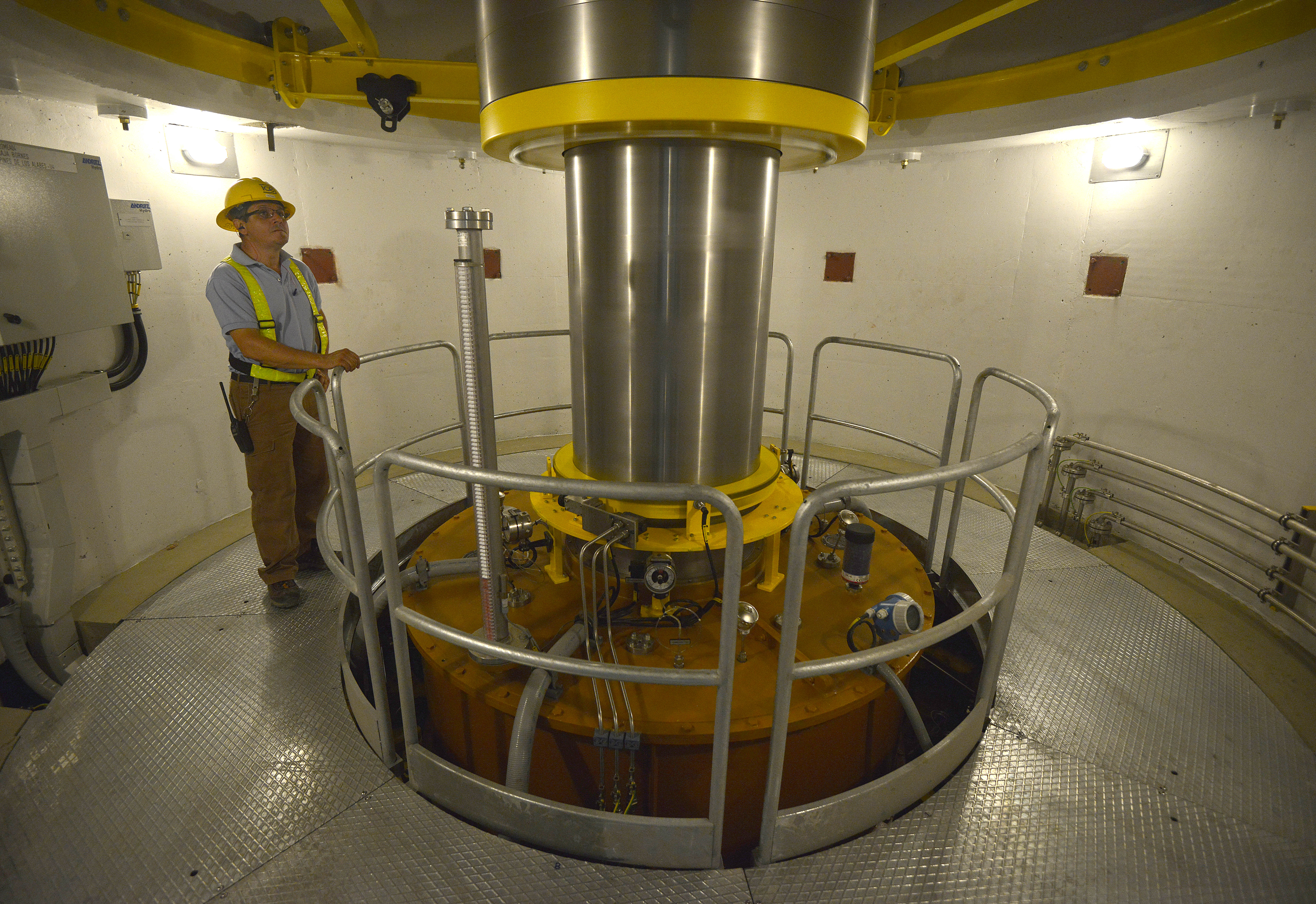
The Reventazon River hydropower dam is the largest public infrastructure project in Central America after the Panama Canal, and the largest hydroelectric dam in Central America. Built by the Costa Rican Institute of Electricity (ICE) with financing from the Inter-American Development Bank (IDB), it came onstream in 2016. / AFP PHOTO /
by Marco SIBAJA
SIQUIRRES, Costa Rica (AFP) — A giant cement structure rises from the river in the middle of Costa Rica’s Caribbean tropical forest, and its turbines spin, each rotation putting the Central American country closer to its goal of relying only on renewable energy.
The $1.4-billion Reventazon Hydroelectric Project is the second-biggest infrastructure work in Central America after the just-finished expansion of the Panama Canal, and following six years of construction, it’s nearly fully online.
Three of the facility’s four turbines are now functioning, each pumping out 73 megawatts of electricity, with the fourth set to join them in August.
“On a high-demand day, the three turbines operate at full capacity with no problem. That makes us very happy,” Luis Roberto Rodriguez, an engineer tasked with building the plant, told AFP.
Water from the Reventazon River sets the turbines spinning. The Costa Rican Electricity Institute (ICE), the country’s state energy provider, built a seven-square-kilometer (2.7-square-mile) dam to control the flow according to demand.
When pumping at full capacity with all four turbines, the facility creates enough energy for 525,000 families.
‘Clean energy’ ambition
Costa Rica is very close to realizing its ambition of creating only “clean” electricity.
In 2015, according to ICE, 99 percent of its electricity was from renewable sources, making its grid one of the cleanest in the world.
Hydroelectric installations account for three-quarters of that energy production. Geothermal facilities using heat from Costa Rica’s numerous volcanoes contribute 13 percent, wind is 10 percent, and biomass and solar power each represent less than one percent.
Just one percent of Costa Rica’s electricity last year came from thermal sources, burning fossil fuels such as diesel or bunker fuel.
“We hope that this (Reventazon) plant will further reduce the need to generate power from the fossil-fuel plants,” ICE’s CEO, Carlos Obregon, told AFP.
However there is one small problem Costa Rica is facing in its reliance on water to create electricity: dry spells that limit how much H20 is available.
Last year, the country suffered one of its driest periods in recent years, and its hydroelectric plants — both ones using dams and ones tapping into normally flowing rivers — had a water deficit for their turbines.
With wind and sunshine also contingent on nature’s whims, Costa Rica finds it necessary to “complement” its clean energy generators with fossil fuel ones to meet demand, Obregon explained.
As water levels in Costa Rica’s dams were so low at the start of 2016, fossil-fuel power took up the slack and will probably account for around three or four percent of national production over the year, he said.
The rainy season, which begins in May each year, has since brought up the water levels however, meaning fossil-fuel electricity production has been virtually nil in recent weeks.
New hydroelectric project
Despite the inherent uncertainty in depending on rains for hydroelectric power, Costa Rica is betting big on its myriad rivers to guarantee its energy future.
Its Congress in June approved a draft law to build an electric train line linking the main urban centers across the middle of the country, from east to west, by way of the capital San Jose located inland.
Lawmakers are also debating tax breaks to encourage the use of electric cars to reduce the number of gasoline-powered vehicles on the roads, which are the nation’s primary cause of global-warming gas emissions.
To handle the growing demand for electricity, Costa Rica is planning to start construction in 2018 on yet another hydroelectric plant that will be even bigger than Reventazon, with more than twice the output.
But that Diquis Hydroelectric Project faces a challenge because it would involve a dam that would flood indigenous lands.
Indigenous communities in southern Costa Rica have already mobilized against the planned facility, saying it would destroy rivers they depend upon for fishing and to move around.
Obregon, however, stressed the need for the Diquis project if Costa Rica is to attain its goal of all-clean energy.
“If the country wants to follow its line for clean energy generation, adding solar and wind plants and tapping geothermal ones, it needs a plant like Diquis,” he said.
“If it doesn’t have it, the system will be in deficit, with high availability in the rainy season and low availability in the dry season — and when there is no energy balance we would have to turn to thermal.”
© 1994-2016 Agence France-Presse








